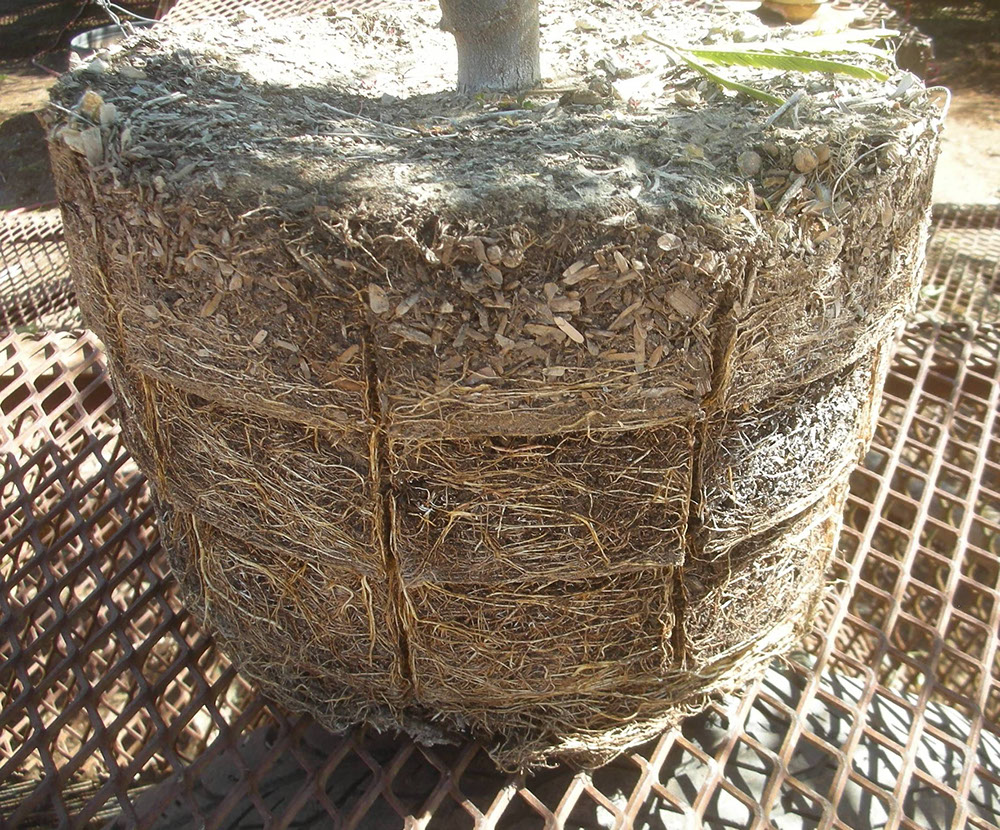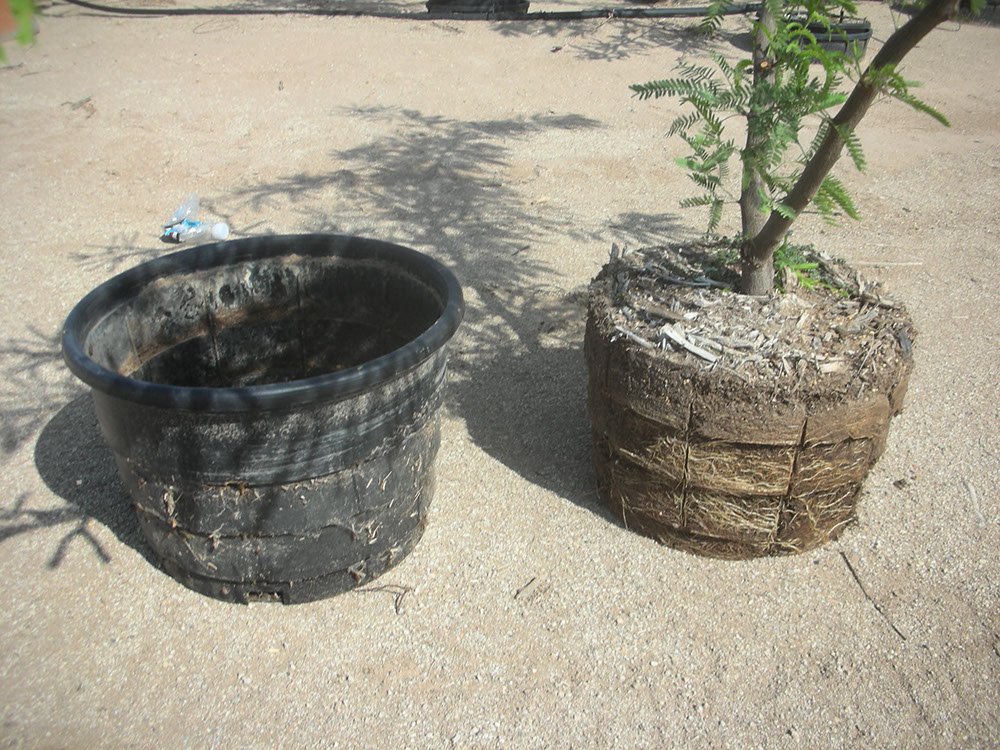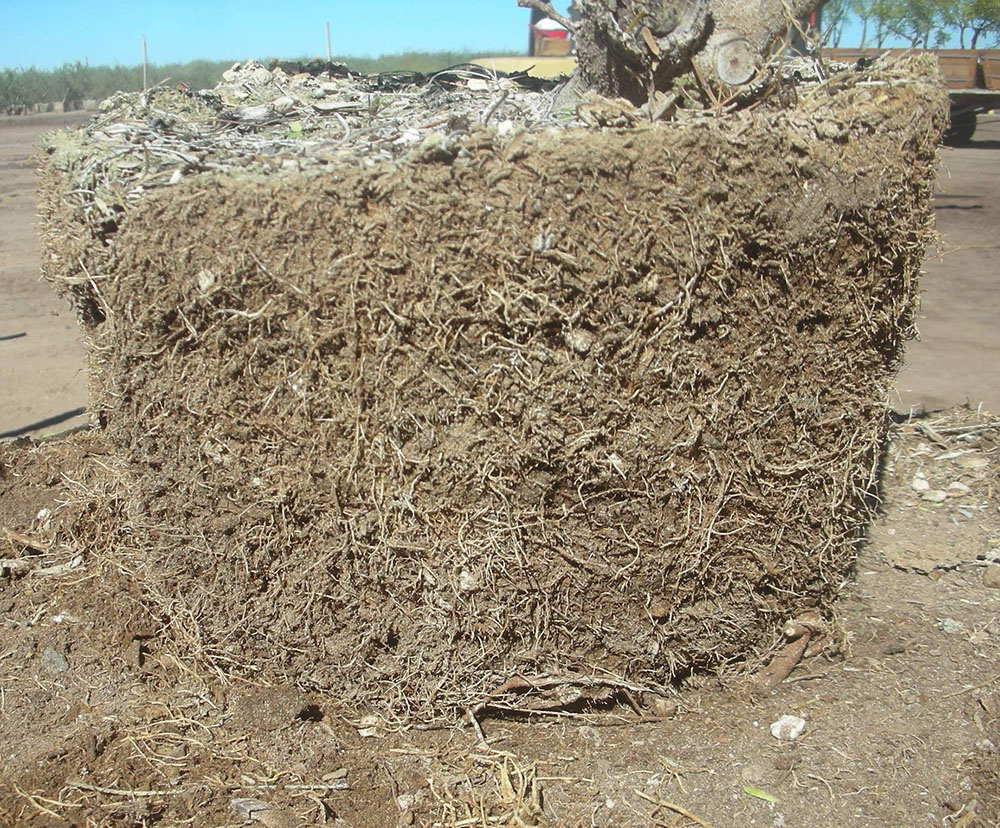


Matching Caliper to Box Size for Quality Control
Arid Zone Trees employs an assortment of quality checks within our production process to insure that the trees we bring to market have sound horticultural qualities, are uniform in appearance, vigorous, long lived (with proper care following transplanting) and an asset to the landscape. The challenges of quality control, when applied to horticultural crops, are unique when compared to those used in traditional manufacturing. Quality is a fairly subjective term and can be applied to appearance, reliability, durability or simply consistency. What makes horticultural "manufacturing" challenging, is that the end products are living plants with each species produced having individual horticultural requirements and unique characteristics.
Trees in the southwest are sold and priced by container size (15 gallon, 24” box, 36” box, etc) and specified or described based on their height, width and caliper. Of these criteria, tree caliper is a widely recognized indicator of root mass. It is the best and most visible way to determine if a tree is overgrown or that the structure of the root system has been compromised in the process of growing the tree in the nursery.
In the pursuit of value the motto, “bigger is better” must be carefully applied when purchasing landscape trees. The notion that a large tree growing in a smaller box is a bargain is usually incorrect in the long run. Longevity, growth and vigor of trees depends on a well develop and proportional root system.
Bumping is a term commonly used in the nursery trade to describe the practice of moving plants that have reached their optimal growth in one size container and transplanting them into a larger container. Plants left too long in small containers can become overgrown and develop circling or bound roots. Root binding is a horticultural time bomb that if allowed to develop, when trees are young, will severely shorten the life of maturing trees by causing crown girdling or by significantly increasing the risk of wind-throw. Quality control at this level of production involved taking steps to insure that the root system is vigorous, appropriate to the size and stage of development of the tree, and that roots are well distributed without being overgrown.
At AZT, each time trees are bumped the root mass is inspected with an eye for a well-distributed root mass and a fine net of lateral roots. With young saplings, root management containers air or chemically prune root tips that come in contact with the sides of the container. This pruning process inhibits circling roots and encourages the development of a well-dispersed root system within the container. Prior to bumping, the root mass of all trees are examined and 1/8 to 1/4" of a inch of the rootball is shaved off the outer edge and bottom of the rootball to further encourage lateral root growth and prevent circling roots. Because this practice is so critical to the development of a strong, healthy and well-distributed root system, it is followed when bumping all sizes of trees (liners to 48" boxes). We recognize that in the current environment, with municipalities requesting caliper instead of appropriately matching caliper with box size, it is tempting to look for trees that satisfy caliper requirements at the lowest possible price, i.e. box size. Any short term savings derived from purchasing trees overgrown for their containers will ultimately be lost through costs associate with tree replacement from death or die back caused by girdling roots, damage to the landscape, surrounding structures and pedestrians and by wind throw.
Please refer to the published “Arizona Nursery Association Recommended Tree Specification” for appropriate matching of box size to tree caliper, height and width.
Above is a tree’s root-ball grown without root management. Notice the circling roots and the necessity to root prune to prevent circling roots.
A tree’s root-ball root pruned in a root management container. See the horizontal root growth vs. a none root management containers circling roots. The root-ball should still be physically root pruned.
AZT™ Root Management Program Before Root Pruning. Tree rootball pulled out of the air root pruning container. Notice the vertical and horizontal groves from the ridged container and network of non-circling feeder roots from air root pruning.
AZT™ Root Management Program After Root Pruning. Root pruning is one more step to ensure there are no circling roots and to encourage radiant root growth in the next container size.
Matching Caliper to Box Size for Quality Control





© Copyright 2000-2020 Arid Zone Trees